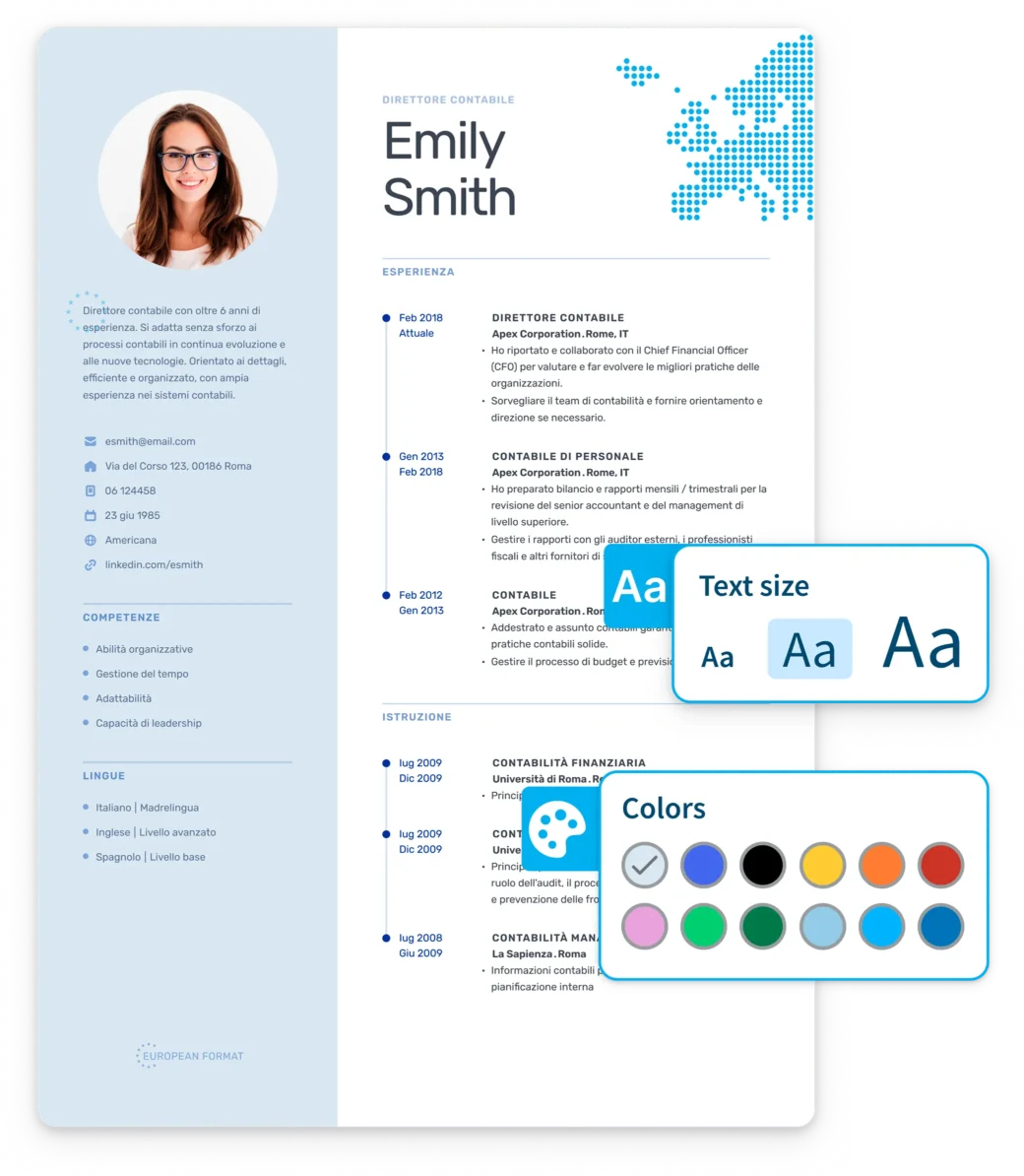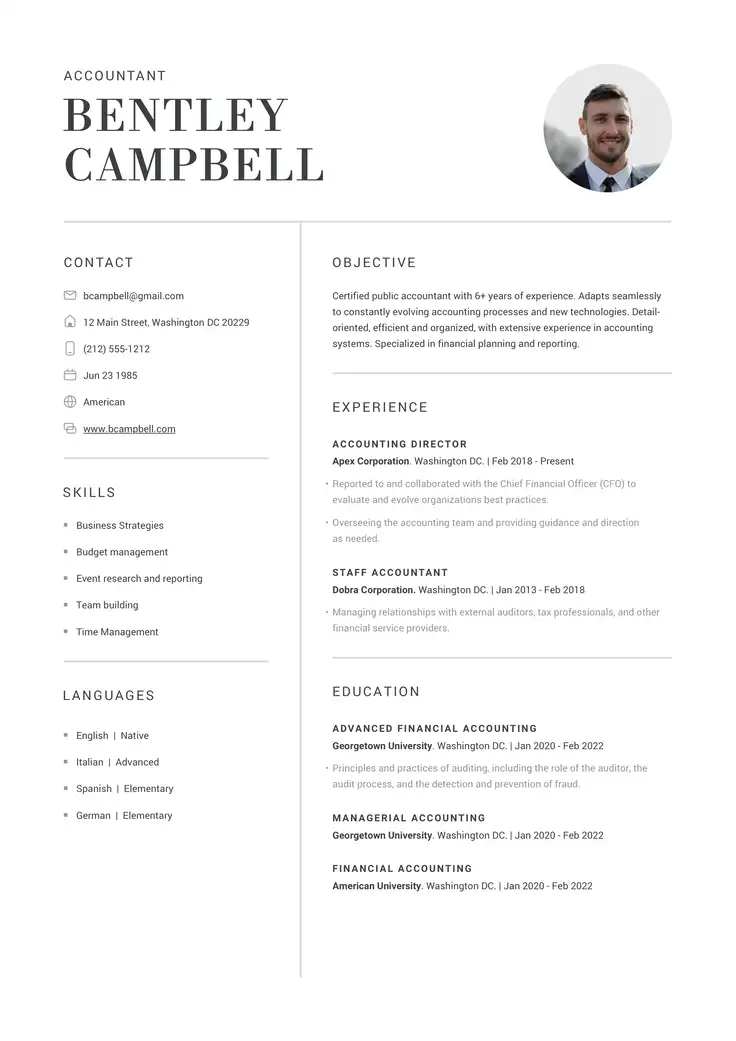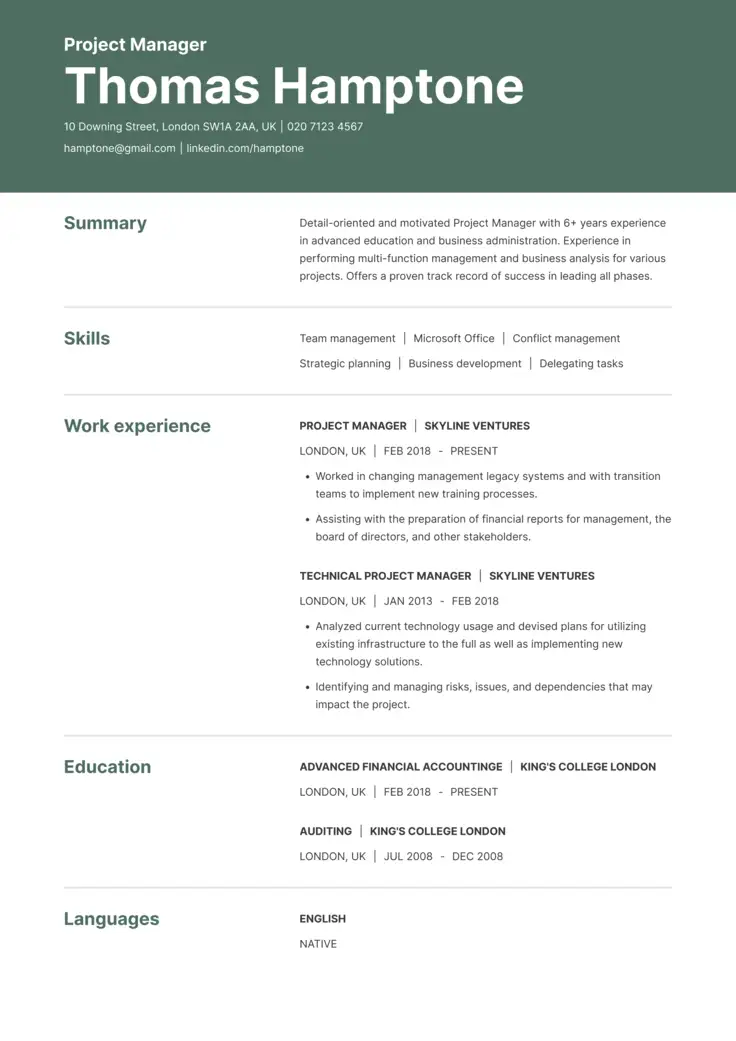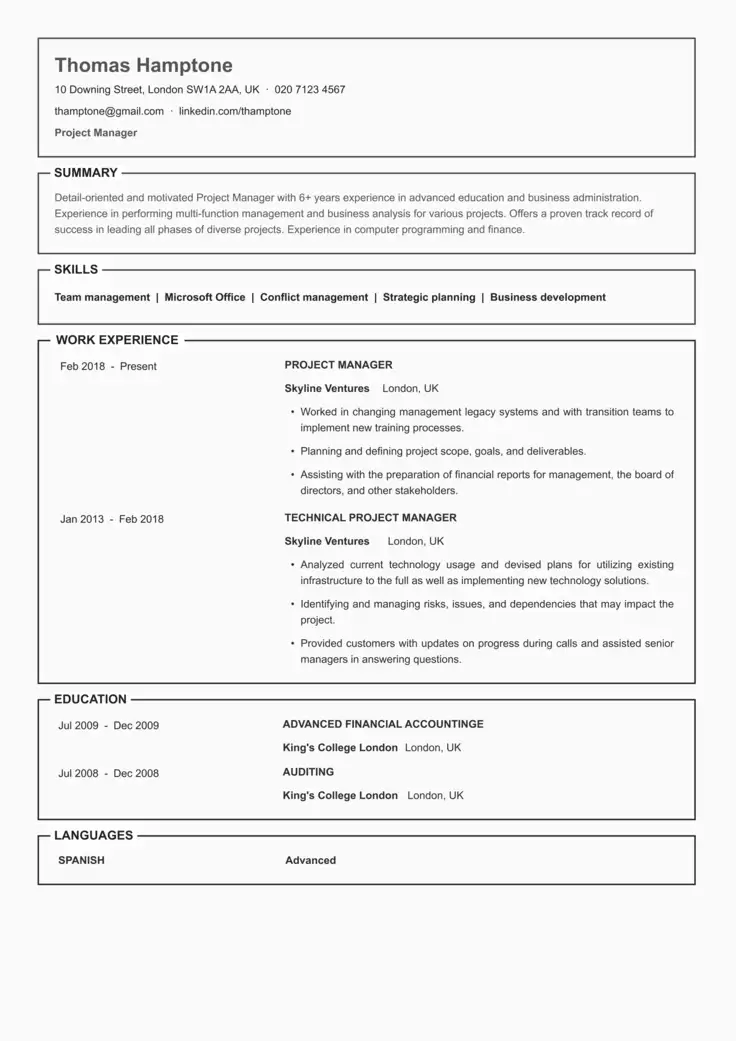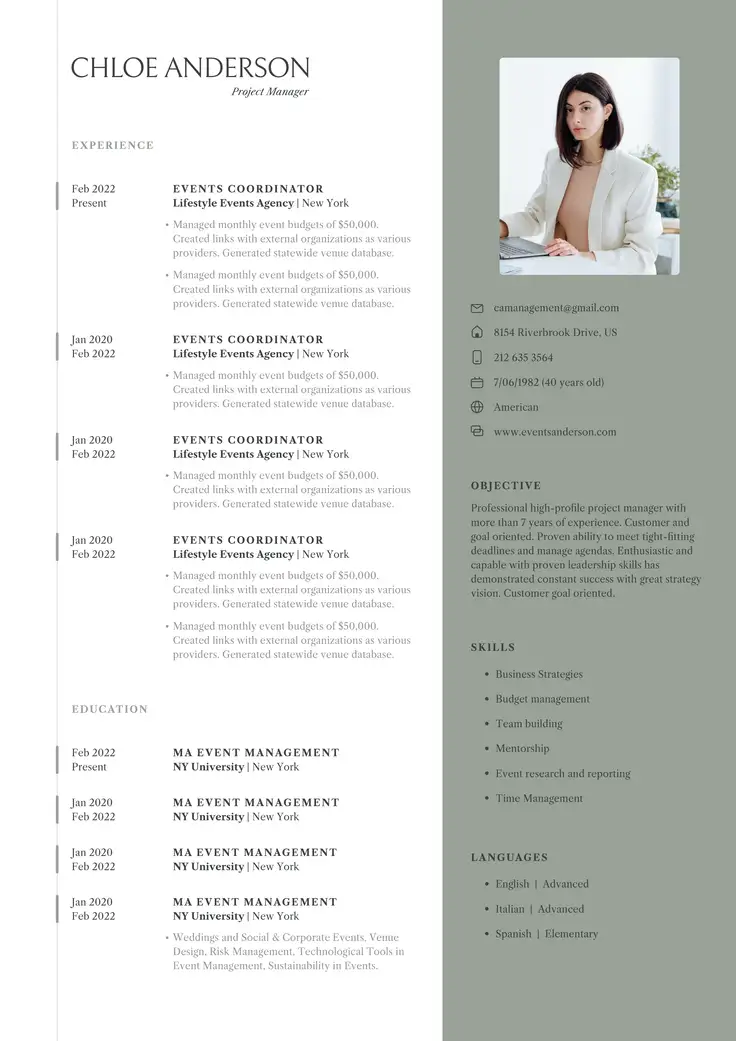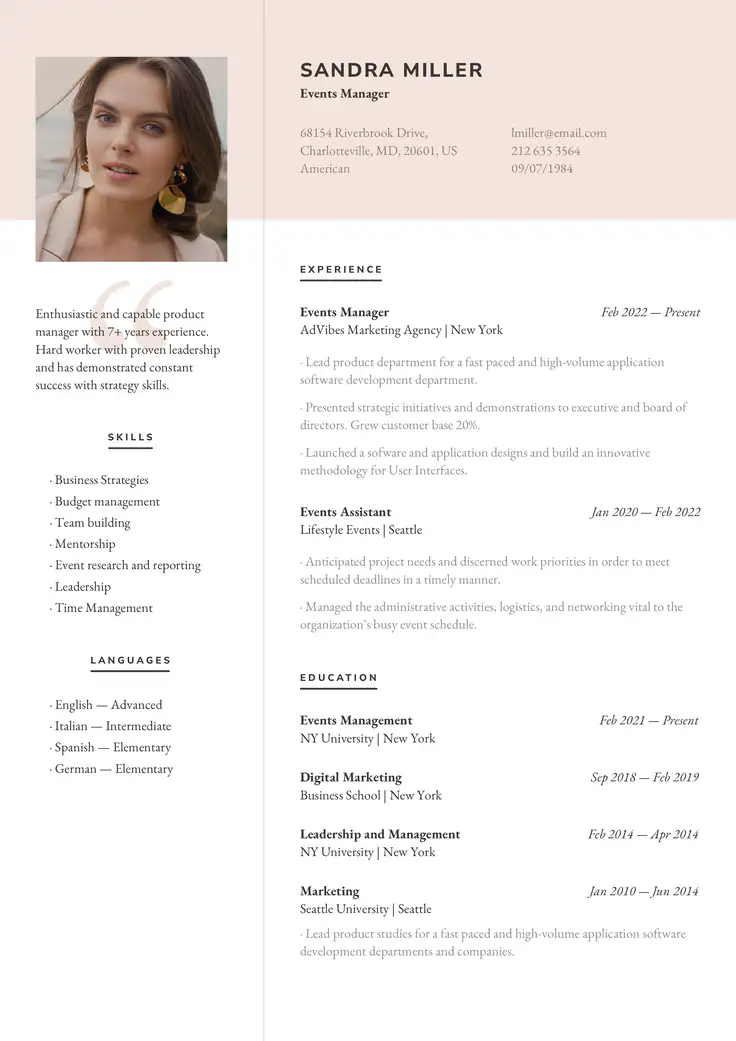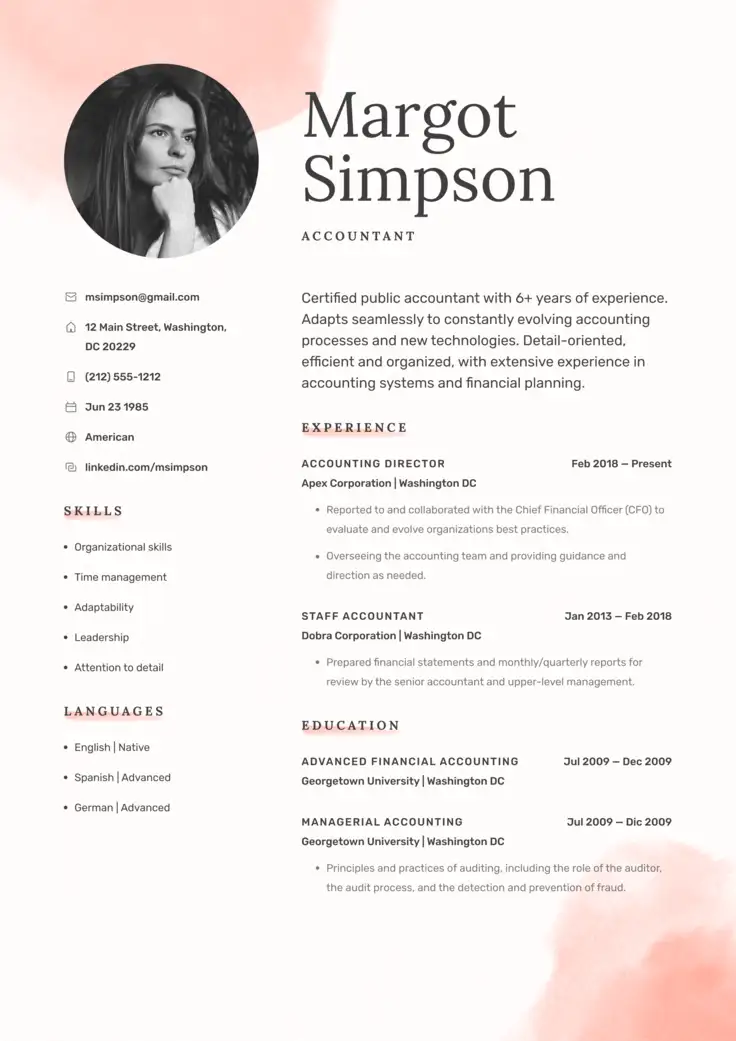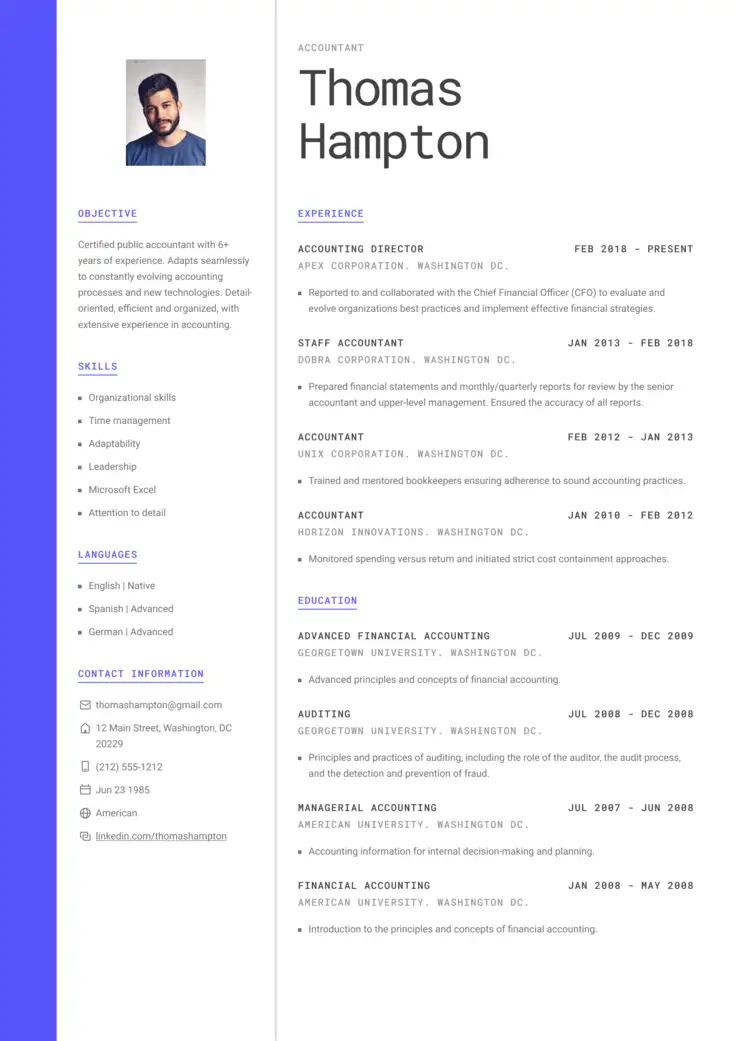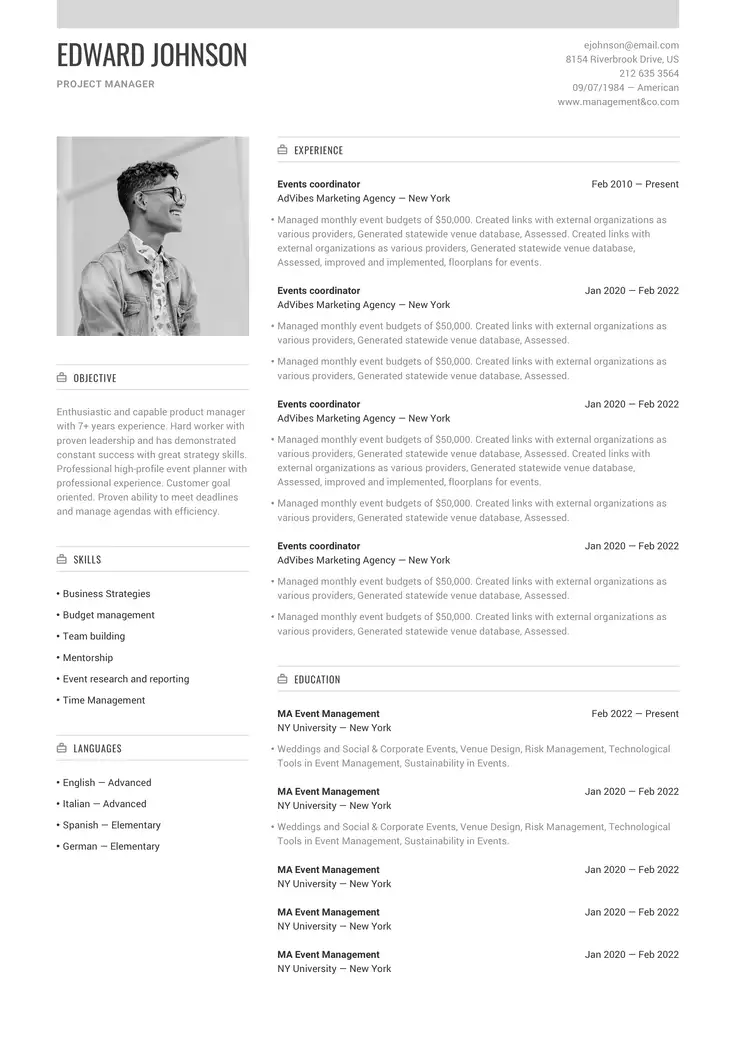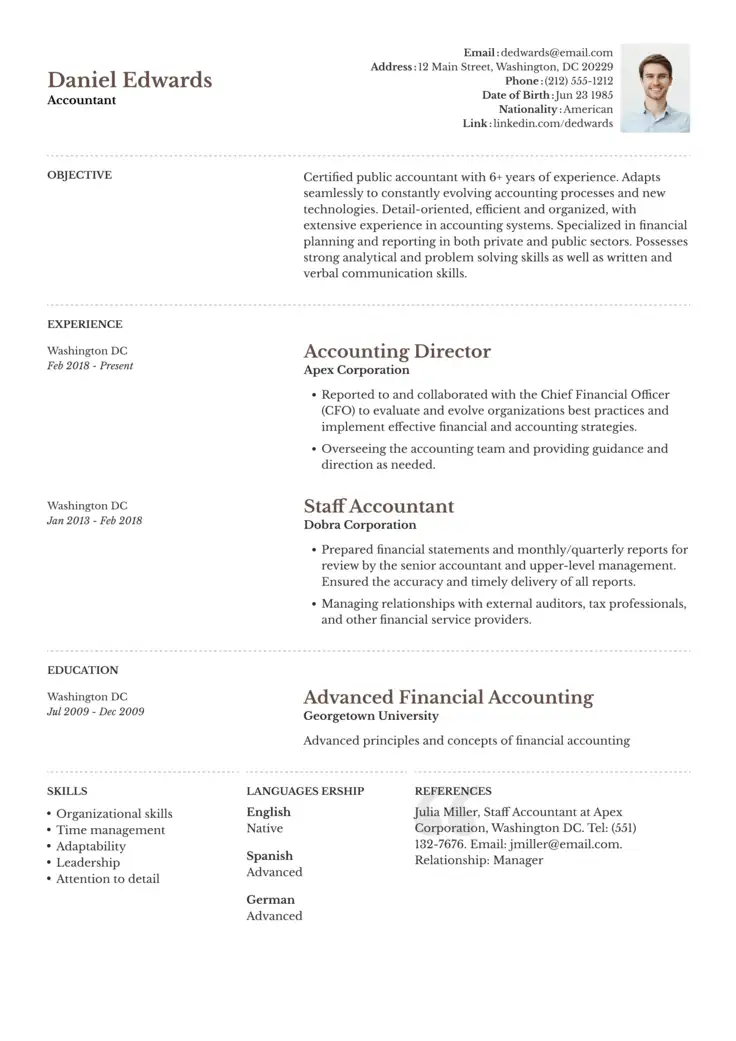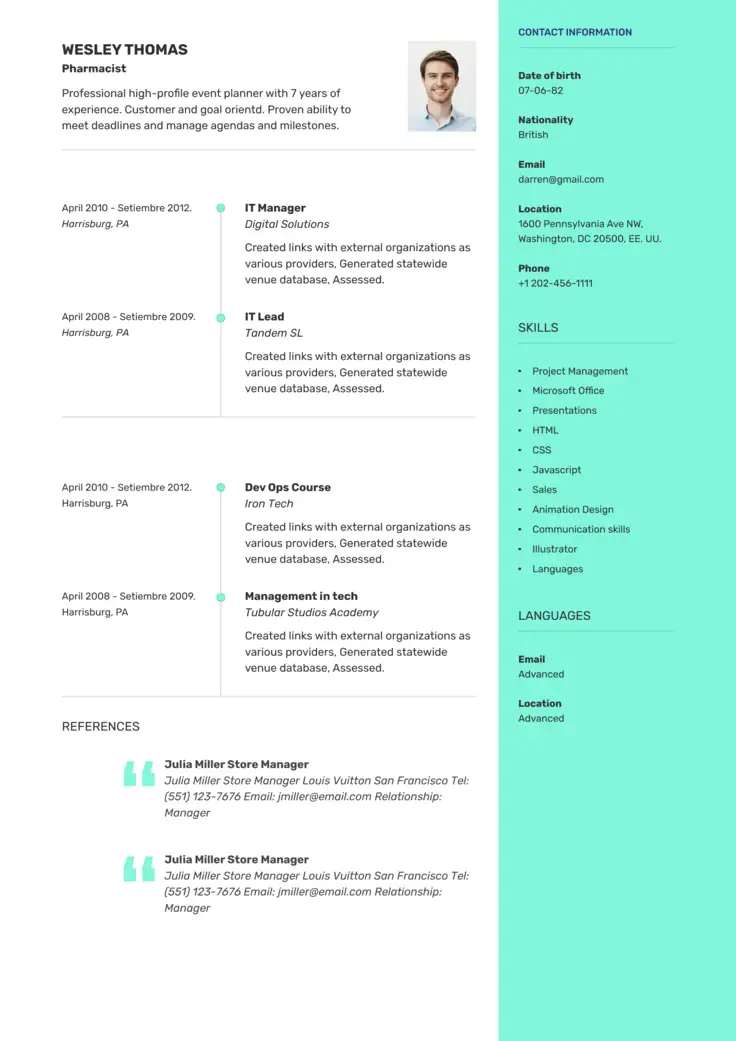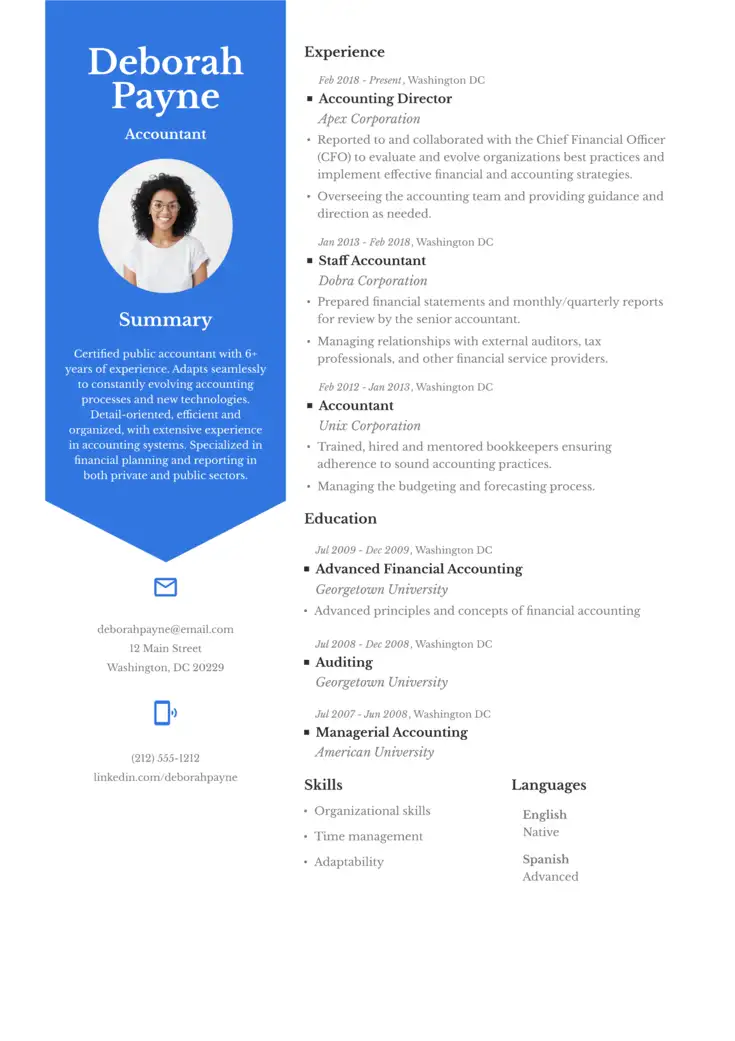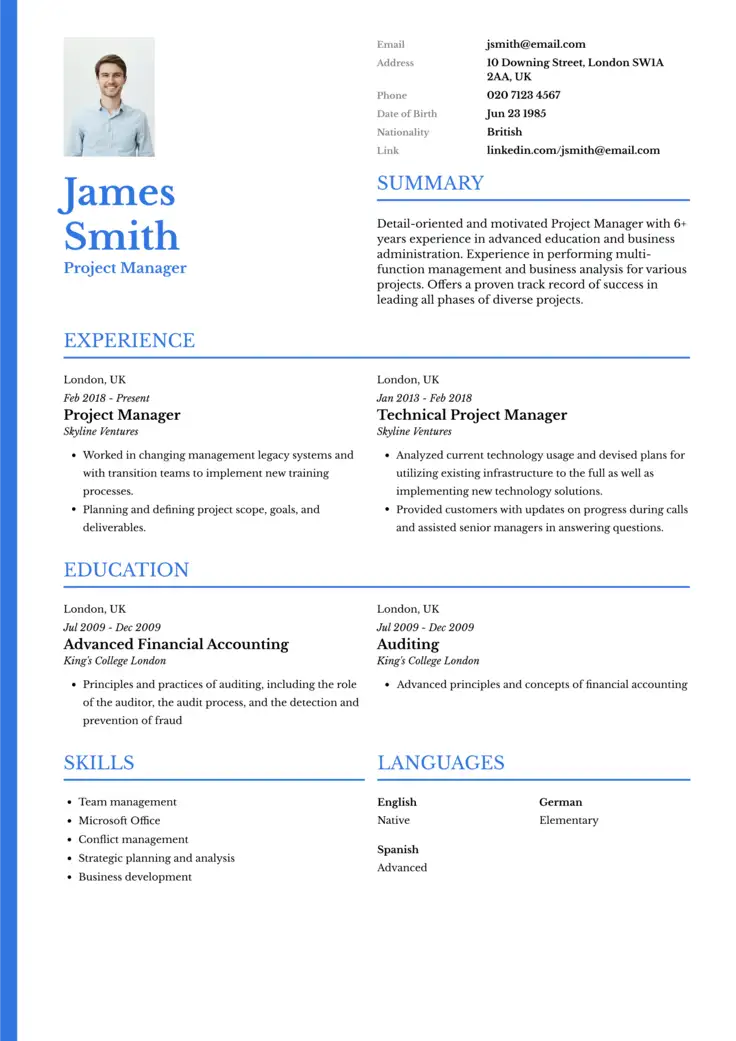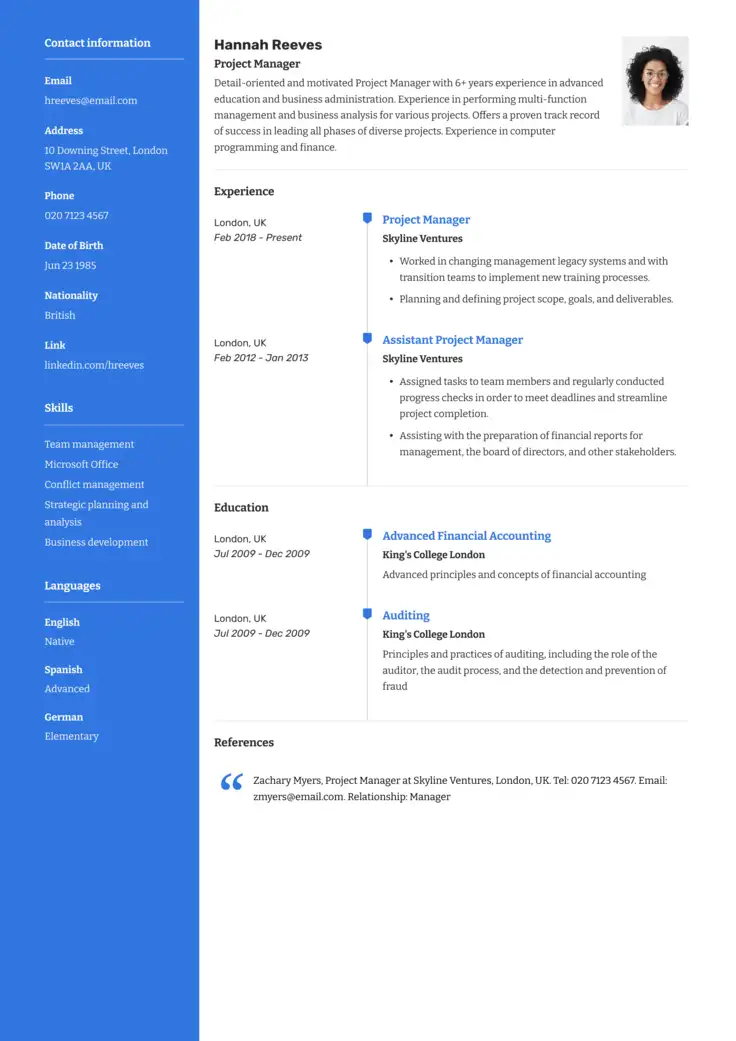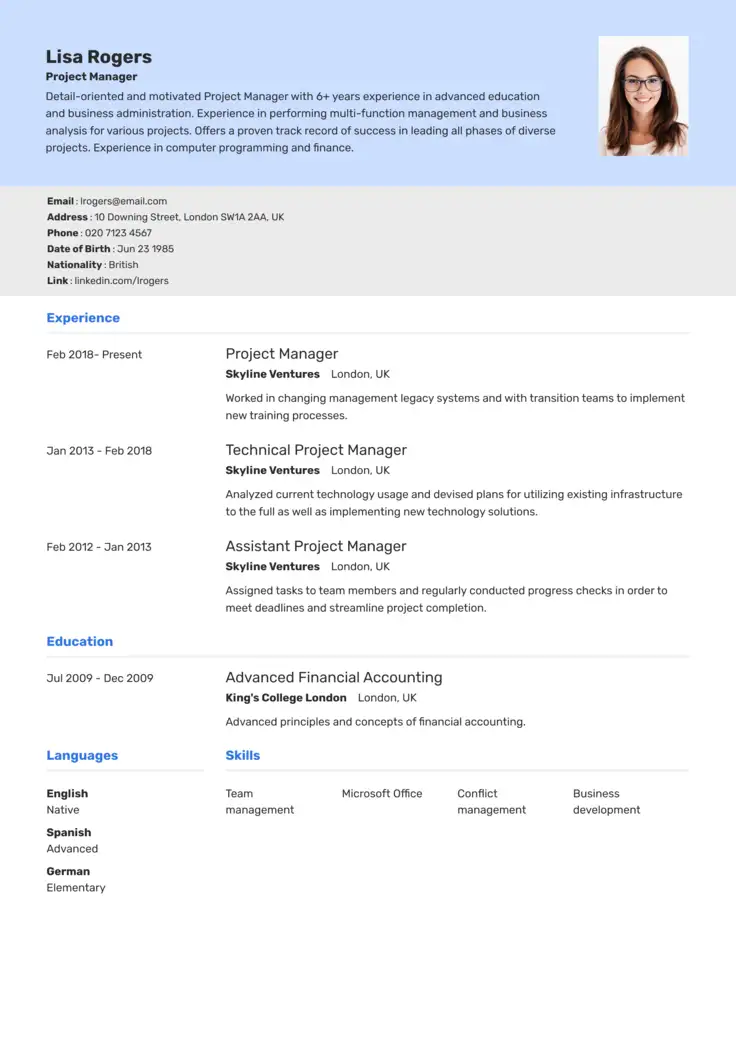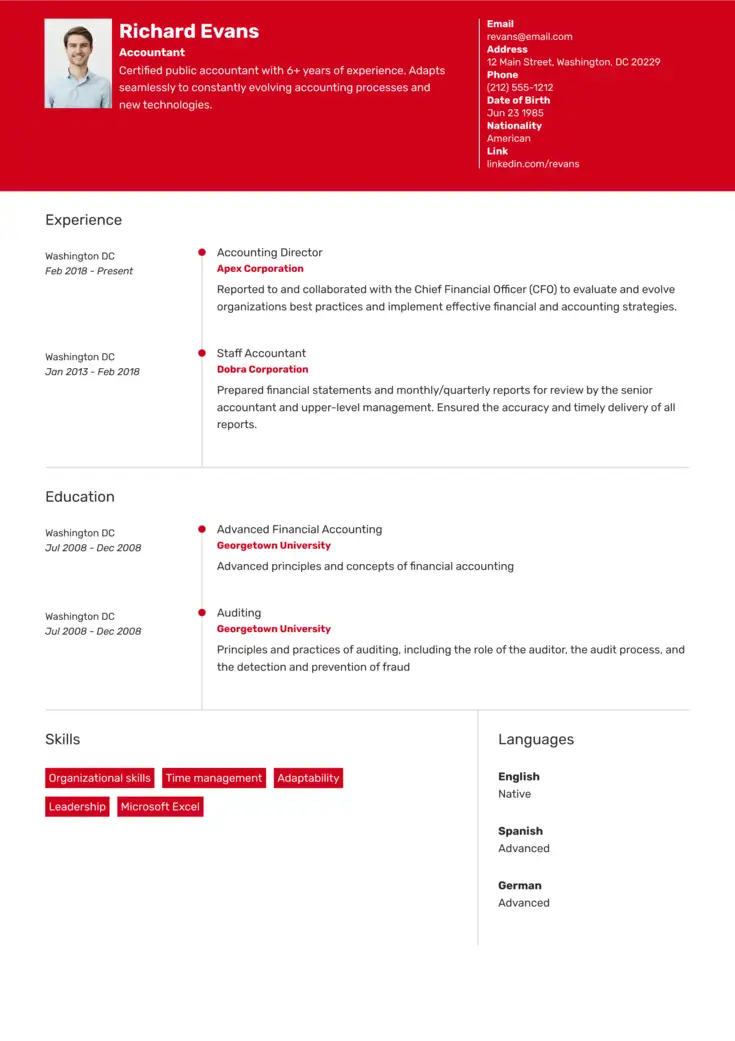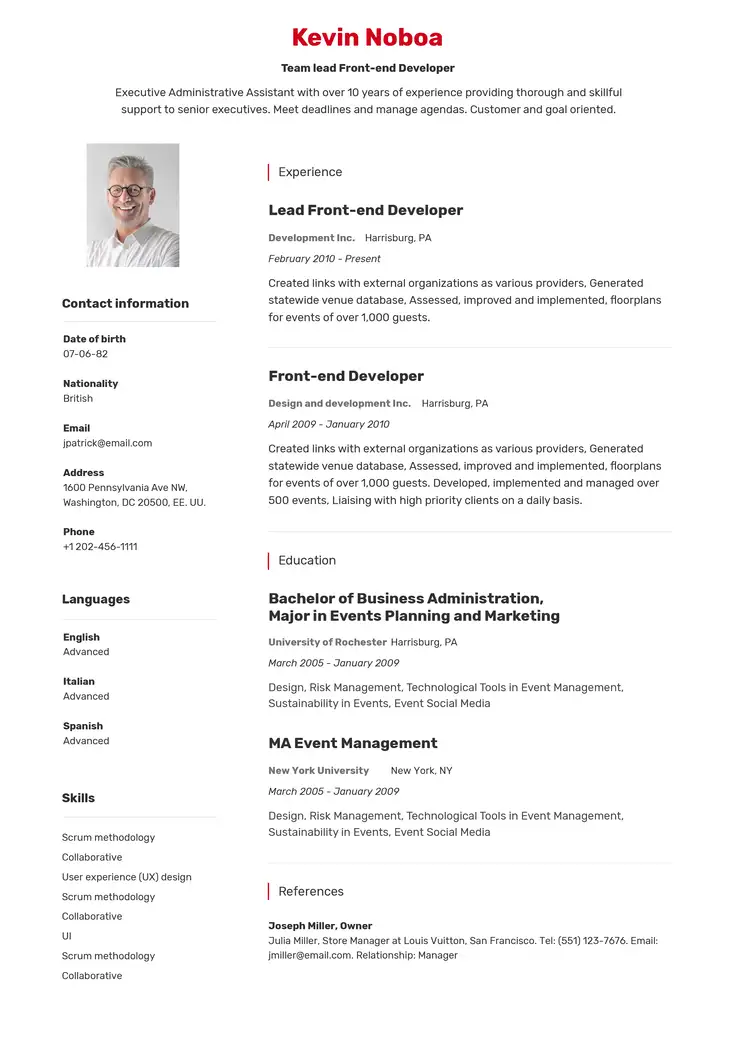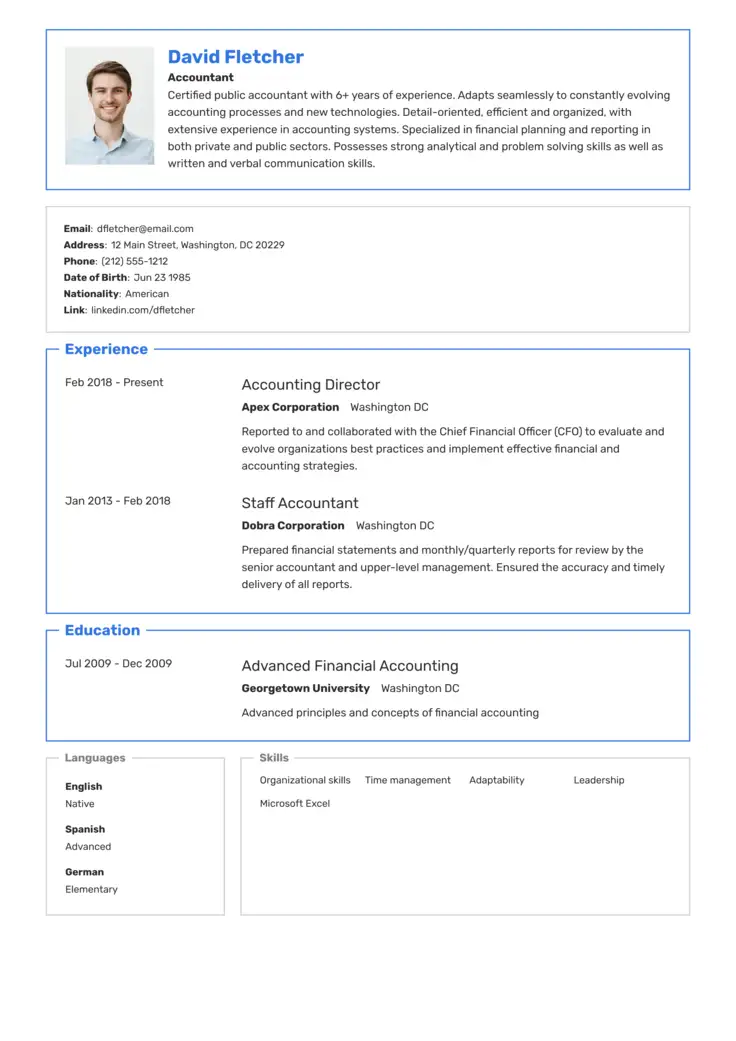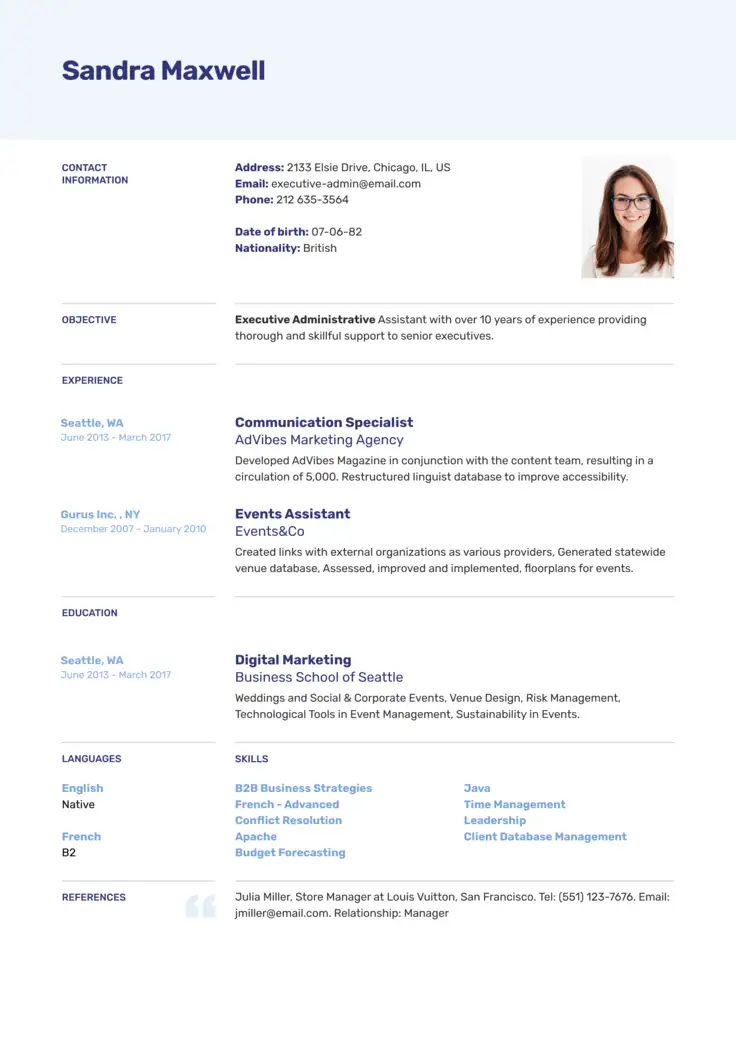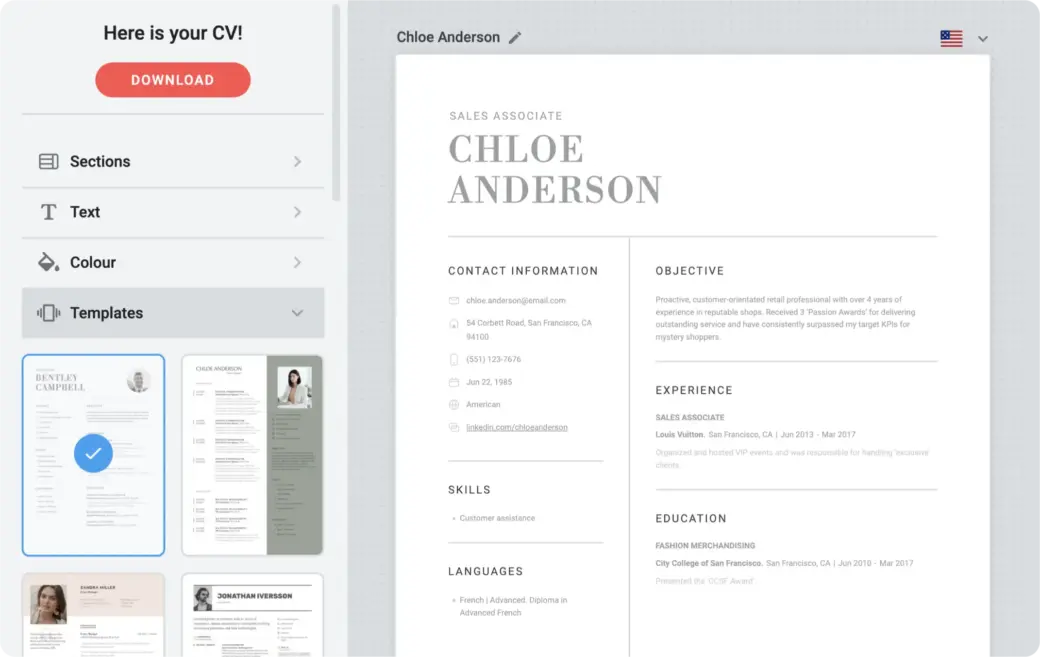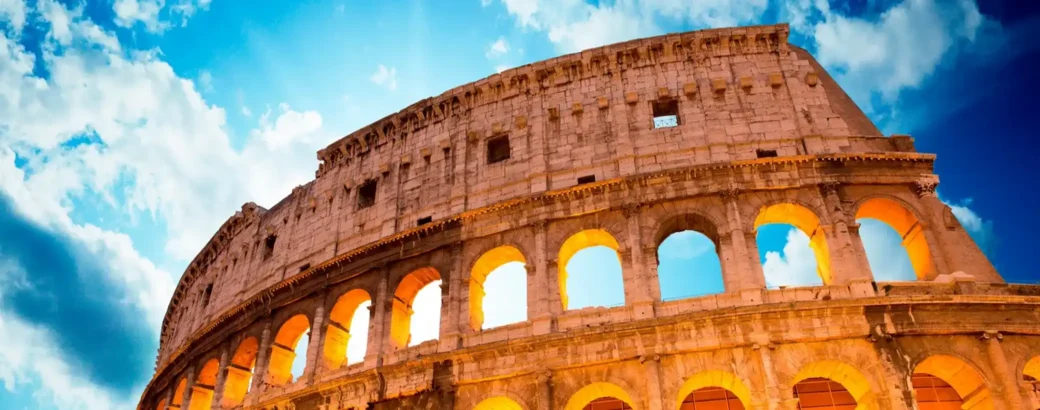
Use Our Online Editor To Create the Perfect Italian Resume
Impress Italian employers and recruiters with our professional templates
Writing an Italian resume is quite a different experience to writing one for an American job search. When targeting a position with an Italian company in Italy, it’s critical that you optimize your resume professionally to adhere to the expected best practice in the country.
Firstly, don’t call it a resume. Italians will more often talk about their Curriculum Vitae, or CV when applying for a job in the country.
When preparing an Italian CV, make sure to:
- Follow local formatting standards
- Clearly state your Italian language level
- Clarify overseas degrees or certifications
Remember that your resume is in many ways the first impression you will have with an Italian recruiter, so you should seek to make it a positive first encounter. In the following guide, you’ll learn the best ways to tailor your resume for the Italian job market and where to take extra care when negotiating the cultural differences.

Writing a Resume in Italian
Knowing how to write an Italian resume will give you a very strong advantage over other foreign applicants applying for jobs in the country’s job market.
When applying in Italy, the language of your CV matters. If you speak Italian fluently, you may choose to write your resume in Italian. If not, it’s best to seek some help. A professional can help make sure your language sounds natural and accurate.
Avoid copying your resume into tools like Google Translate. This often leads to errors and awkward phrasing that can hurt your application. Clear, professional spelling and grammar are essential when applying for any role.
Before you really get started, however, be sure to follow these important tips as you write your perfected Italian CV:
- Start the resume with your name as the title header. Don’t simply title it with Curriculum Vitae
- Creative resumes and specially designed resumes may look amazing, however, most hiring managers in Italy prefer a standard chronological resume.
- Do your research before you apply for a job (even in the US). Try and glean what the culture, values and working processes of the organization are before you start. This can offer clues for how to structure your resume and what information you should include.
- Keep your resume to the point. Cut out any extraneous information that doesn’t apply to the role you’re targeting.
- As mentioned previously, avoid spelling and grammar errors at all costs.
- Use the formal third person “lei” form of “you” rather than the informal “tu” when you address the recruiter directly.
Create or Enhance Your Italian CV With AI
When writing an Italian CV, consider having it reviewed by a professional translator or a fluent Italian speaker. This usually improves accuracy and tone, but it can also be costly.
Another option is to use our AI resume builder with Italian-language templates. You can generate a new CV in Italian, or upload your existing one and enhance it with AI. This makes it easy to apply the correct section headings, formatting, and wording for Italian employers, without starting over.
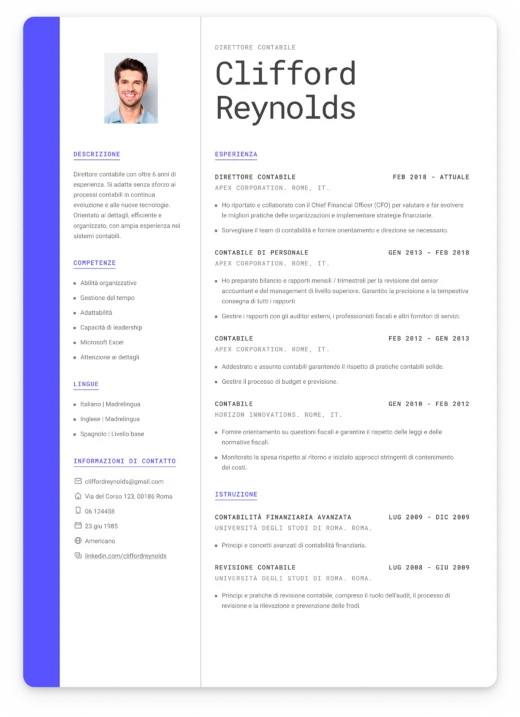
Italian Resume: Layout and Sections
Writing your resume is only half the battle. Formatting it correctly so that it displays the information Italian recruiters will want to see is also crucial. If in doubt, using a pre-made Italian curriculum vitae template can help you organize all the right components of a resume into an effective professional design.
Top tips for formatting an Italian resume:
- The length of the CV should be no more than 2 letter pages
- Keep the text at a consistent size throughout the document
- Mark each section clearly out with larger size headers and subheaders
Contact Information
This is perhaps the most critical part of any resume, as without it, you will never get called in for an interview. In the case of an Italian resume, you will still need the details you’d expect on a US resume, such as your phone number, email address — and of course, your name. However, whilst it might not be common in the states, recruiters in Italy will want to see a date of birth.
Photo
Compared to the USA where recruiters are 88% more likely to reject your application if you add a profile picture, recruiters in Italy expect a photo on your resume. This is similar to their European neighbors like Germany, Spain or France.
The photo should be a passport-sized (2” x 2”) headshot of you, ideally with a neutral background. The picture you choose should look professional, therefore avoid any pictures taken at parties or at social events whenever possible.
However, it is not an essential obligation to include a photo. It may still be expected as a matter of course in Italy, however, it is becoming ever more common to apply for jobs with “anonymous CVs”.
Work Experience
Your work experience section is what will really sell you as a candidate in almost all cases. In this part of the resume, you should present all the previous jobs you’ve held in reverse chronological order, working back from your most recent job to your earliest relevant position.
You don’t need to include every single job you’ve ever had. As a rule, don’t refer to jobs you held more than 10 years ago.
Additionally, if you have a lot of experience, only detail the positions and tasks you’ve experienced that are relevant to the job you’re aiming for.
When you present your previous employers on the page lay out each entry in the following format:
- The name of the company and the dates of employment
- Your job title in the organization
- The key duties that you undertook in your role at the company
Skills
Including your hard and soft skills is very much an expectation on an American resume. However, in Italy, these are often presented in the cover letter.
Work experience is the most important element to communicate on your Italian resume. However, it’s becoming more common (thanks to services like LinkedIn) to mark a few key skills on the page, so this is an optional but not totally essential step.
Education
In order to communicate your training properly, you’ll need to make sure that your qualifications are expressed in a way the hiring manager will be able to easily understand. That means you’ll need to detail clearly what titles you’ve achieved, indicating where possible what this is equivalent to in the Italian system. As seen below:
| Italian Qualification | US Qualification |
| Diploma di istruzione secondaria superiore | High School Diploma |
| Laurea triennale | Bachelors Degree |
| Laurea magistrale | Masters Degree |
| Dottorato di ricerca | Doctorate |
Additionally, if you are listing degree achievements or High School Diplomas it can be a good idea to indicate the exact grade or level that you achieved. This is common practice in Italy, and it’s often assumed that candidates not stating their exact grade didn’t achieve highly. In the case of translating a US qualification for this, it’s best to indicate your numerical Grade Point Average (GPA).
Languages
Naturally, writing a resume for a job in a foreign country where a different language is spoken will require some information about the languages you can speak. English is important, due to its position as a major international business language, and will be an attractive skill for a recruiter to see on your CV.
However, perhaps the most important information to include in this section is your knowledge of Italian.
Depending on the job you’re targeting this could be crucial. You should indicate clearly what your level of Italian is on the resume. This is normally indicated with the following adjectives:
| Fluida | Fluent |
| Buona | Good |
| Discreta | Moderate |
However, if you’re aiming for a role where English is spoken throughout the company, then your spoken Italian won’t play such a big role.
Hobbies and Interests
This is less important on an Italian resume. While recruiters may value personal traits like reliability or interpersonal skills, hobbies and interests are not usually expected.
Instead focus on your talents, personal goals and any additional details regarding your ability to relocate or travel for work.
Italian Resume Example
To get a good idea of how this will all look on paper, it’s best to look over a specific example of an Italian curriculum vitae. This will help you tailor your document to exactly what recruiters will expect to receive from a professional candidate.
[Giovanni Rossi]
[Via Roma 123, 00100 Roma (RM) | giovanni.rossi@email.com | 333-1234567]
>> Obiettivo Professionale <<
Sono un tecnologo alimentare con una passione per l’innovazione nel settore alimentare. Cerco di applicare le mie conoscenze tecniche e la mia creatività per contribuire allo sviluppo di prodotti alimentari di alta qualità, sicuri e sostenibili.
>> Formazione <<
- Laurea Magistrale in Tecnologia Alimentare, Università degli Studi di Milano, Milano, Italia (2012-2017)
- Tesi di Laurea: “Sviluppo di nuovi processi per la conservazione degli alimenti mediante l’uso di tecnologie innovative”
- Stage presso l’azienda XYZ S.p.A., Milano, Italia (2016-2017)
>> Esperienza Lavorativa <<
Tecnologo Alimentare presso ABC Food Group S.r.l., Roma, Italia (2017 – Presente)
- Responsabilità principali:
- Sviluppo e ottimizzazione di ricette per nuovi prodotti alimentari.
- Controllo qualità dei prodotti in conformità con le normative vigenti.
- Collaborazione con il team di ricerca e sviluppo per l’introduzione di nuove tecnologie.
- Gestione dei processi di produzione per garantire la sicurezza alimentare e la qualità.
- Partecipazione attiva al miglioramento continuo dei processi produttivi.
>> Competenze Tecniche <<
- Conoscenza approfondita delle normative alimentari nazionali e internazionali.
- Esperienza nell’utilizzo di strumentazione di laboratorio per l’analisi chimica e microbiologica.
- Capacità di sviluppare e implementare piani di controllo qualità.
- Conoscenza delle tecniche di produzione alimentare, incluse l’omogeneizzazione, la pastorizzazione e la liofilizzazione.
- Competenze informatiche: Microsoft Office, software di analisi statistica.
>> Competenze Personali <<
- Capacità di lavorare in team multidisciplinari.
- Eccellenti capacità comunicative e di problem solving.
- Orientamento al risultato e capacità di gestire le scadenze.
- Flessibilità e adattabilità alle nuove sfide.
- Passione per l’innovazione e la ricerca.
>> Lingue <<
- Italiano: Madrelingua
- Inglese: Livello Avanzato
>> Altri Interessi <<
Nel tempo libero mi piace sperimentare in cucina e approfondire le mie conoscenze sulle ultime tendenze alimentari. Sono anche appassionato di fotografia e viaggi.
Resumecoach features resume templates in multiple different languages to make applying for a job anywhere that little bit simpler. Simply browse the options in our resume builder tool and create the perfect resume for wherever in the world you’re applying.
Dive Into Expert Guides to Enhance your Resume
ResumeCoach has successfully given expert advice to individuals to secure employment worldwide.
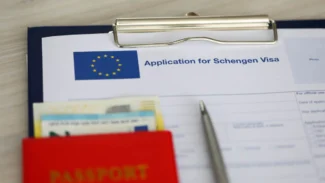
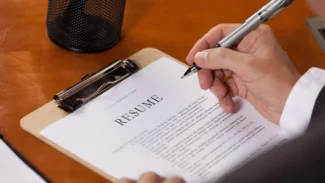

Frequently Asked Questions
An Italian resume should include the following:
- Personal details (full name, address, and contact information)
- Professional photo (if relevant to the role)
- Experience
- Education
- Skills
If you’re creating an Italian resume, remember also to highlight your proficiency in languages, especially Italian and English. Adapt your resume to emphasize experiences and qualifications relevant to the job you’re applying for.
Including short, concise descriptions of your roles and achievements can make your resume stand out.
It would also be a good idea to mention that you’re allowed to work in Italy if you are not from the European Union.
To write a resume in two languages, such as Italian and English, start by identifying the job’s language requirements. If the role demands proficiency in both languages, include sections or create separate versions for each language.
Highlight bilingual skills in the professional summary and experience sections, showcasing how these abilities contribute to job performance.
For positions in multilingual environments or where specific languages are essential, detail your proficiency and professional experiences in those languages to strengthen your candidacy.
In Italy, including a photo on your resume is not mandatory, but hiring managers may appreciate it. This suggests that while it’s not a strict requirement, adding a photo could potentially make your application more appealing to some employers.
When deciding whether to include a photo on your resume for an Italian job application, it’s important to consider the industry and the specific company culture.
The main differences between an Italian CV and a US resume lie in length, detail, and format. An Italian CV is often longer and more detailed, focusing on a comprehensive overview of the applicant’s educational background, work experience, and skills. It is usually formatted in reverse chronological order and can extend beyond 2 pages if necessary.
On the other hand, a US resume is typically concise, limited to 1 or 2 pages, and tailored specifically to the job for which one is applying, highlighting relevant skills and experiences.

